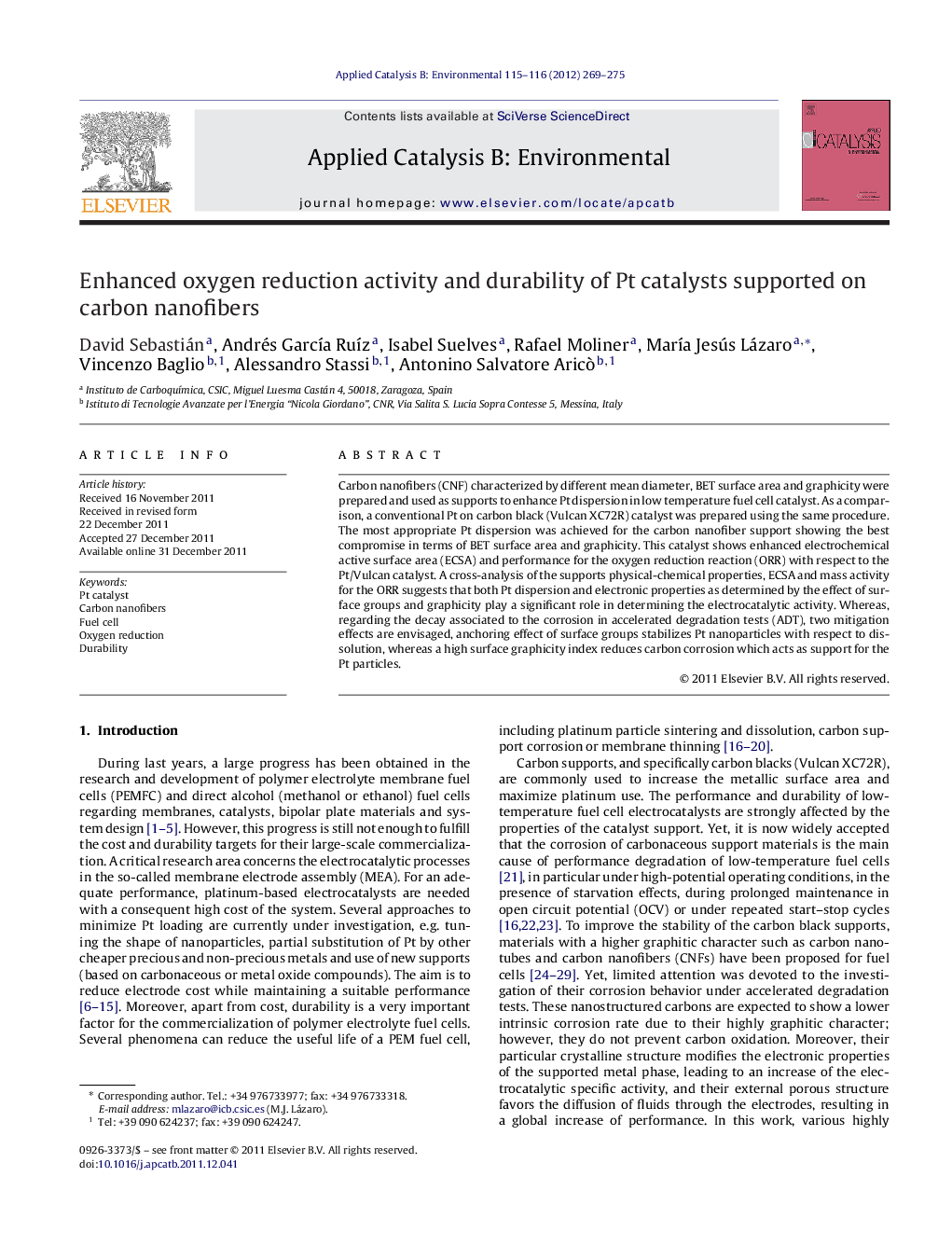| Article ID | Journal | Published Year | Pages | File Type |
|---|---|---|---|---|
| 46429 | Applied Catalysis B: Environmental | 2012 | 7 Pages |
Carbon nanofibers (CNF) characterized by different mean diameter, BET surface area and graphicity were prepared and used as supports to enhance Pt dispersion in low temperature fuel cell catalyst. As a comparison, a conventional Pt on carbon black (Vulcan XC72R) catalyst was prepared using the same procedure. The most appropriate Pt dispersion was achieved for the carbon nanofiber support showing the best compromise in terms of BET surface area and graphicity. This catalyst shows enhanced electrochemical active surface area (ECSA) and performance for the oxygen reduction reaction (ORR) with respect to the Pt/Vulcan catalyst. A cross-analysis of the supports physical-chemical properties, ECSA and mass activity for the ORR suggests that both Pt dispersion and electronic properties as determined by the effect of surface groups and graphicity play a significant role in determining the electrocatalytic activity. Whereas, regarding the decay associated to the corrosion in accelerated degradation tests (ADT), two mitigation effects are envisaged, anchoring effect of surface groups stabilizes Pt nanoparticles with respect to dissolution, whereas a high surface graphicity index reduces carbon corrosion which acts as support for the Pt particles.
Graphical abstractFigure optionsDownload full-size imageDownload as PowerPoint slideHighlights► Crystallinity, porosity and morphology of various CNF affect the catalytic behavior. ► Using CNF as support enhances the performance with respect to conventional support. ► Maximum mass activity is achieved by a certain proper combination of properties. ► The high graphicity index of CNF reduces carbon corrosion at elevated potential.
